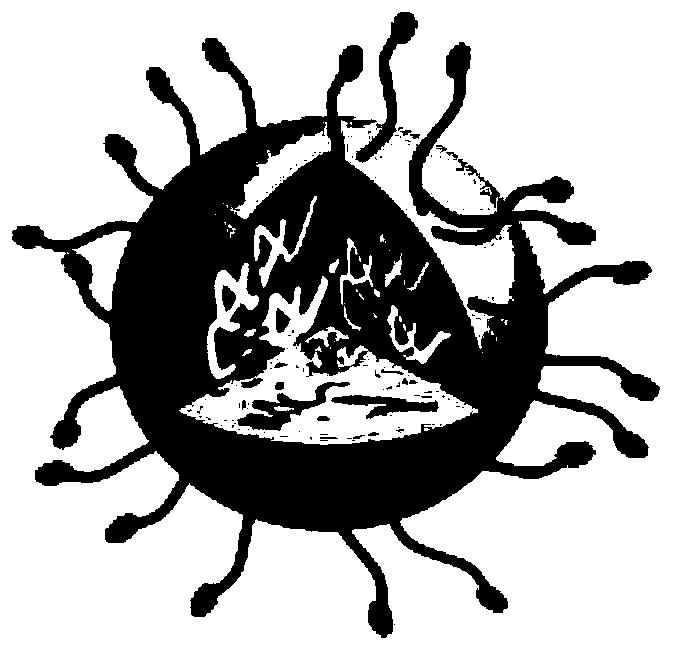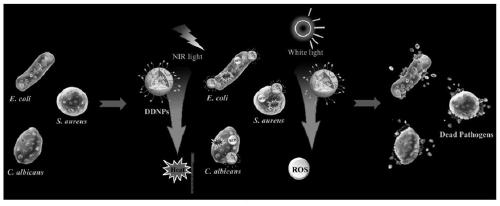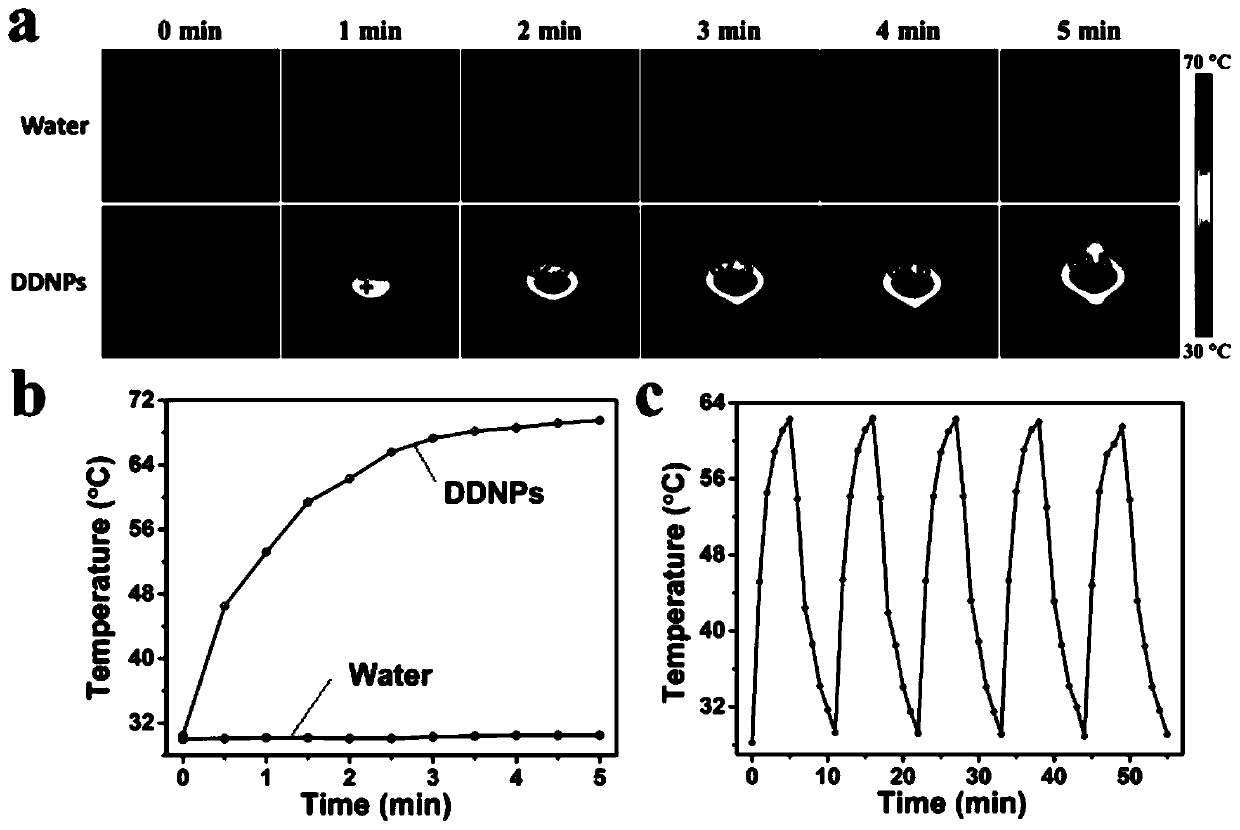Conjugated polymer and aggregation-induced emission micromolecule co-doped nano particles and production method and application thereof
A technology of aggregation-induced luminescence and conjugated polymers, applied in the field of biomedicine, can solve the problems of limited tissue penetration depth and limited PDT applications
- Summary
- Abstract
- Description
- Claims
- Application Information
AI Technical Summary
Problems solved by technology
Method used
Image
Examples
Embodiment 1
[0037] The preparation process of DDNPs:
[0038] Prepared by nanoprecipitation method. First, take 200 μL of DPATP-CN (1.0 mg·mL -1 , THF), 1mLDPPT-TT (0.5mg·mL -1 , THF), 1mLPSMA (2mg·mL -1, THF) to prepare 4 mL of THF solution, mix well and add it into 10 mL of ultrapure water under ultrasonication, and ultrasonicate for 3 to 5 minutes to obtain a uniform and transparent liquid. Next, blow nitrogen into the finally obtained solution for 1 h to blow off THF. Raise the temperature to 100°C, and continue to blow nitrogen until the solution is concentrated to 5 mL. After cooling to room temperature, the solution was filtered through a 0.22 μm water filter to remove impurities.
Embodiment 2
[0040] To characterize the photothermal properties of the DDNPs prepared in Example 1, the specific steps are as follows:
[0041] Put 100 μL of LDDNPs solution in a 200 μL centrifuge tube and irradiate with 808 nm laser for 5 min with a light intensity of 600 mW cm -2 . The temperature change excited by near-infrared light was detected and recorded using a thermal imager (with an accuracy of ±0.1°C).
Embodiment 3
[0043] The photodynamic properties of the DDNPs prepared in Example 1 were characterized, and the specific steps were as follows:
[0044] Activation of reduced 2,7-dichlorofluorescein (DCFH): Take 50 μL of 10 mmol / L (4.8 mg dissolved in 1 mL of ethanol) 2,7-dichlorofluorescein diacetate (DCFH-DA) ethanol solution and add 450 μL Dilute with ethanol, then add 2mL of 0.01mol / L NaOH aqueous solution, and then place it in the dark at room temperature for 30min to activate. Then add 10 mL of 1×PBS (10 mmol / L, pH=7.4), and put the DCFH solution with a final concentration of 40 μmol / L after mixing evenly and put it on ice for use. As shown, DCFH is converted to 2,7-dichlorofluorescein (DCF, excitation 488 nm, emission 524 nm) with high quantum yield in the presence of reactive oxygen species (ROS). After adding 1 mL of activated DCFH solution and 10 μL DDNPs into a quartz cuvette and mixing them evenly, the solution was exposed to white light (5 mW·cm -2 ) under irradiation for 1 m...
PUM
 Login to View More
Login to View More Abstract
Description
Claims
Application Information
 Login to View More
Login to View More - R&D
- Intellectual Property
- Life Sciences
- Materials
- Tech Scout
- Unparalleled Data Quality
- Higher Quality Content
- 60% Fewer Hallucinations
Browse by: Latest US Patents, China's latest patents, Technical Efficacy Thesaurus, Application Domain, Technology Topic, Popular Technical Reports.
© 2025 PatSnap. All rights reserved.Legal|Privacy policy|Modern Slavery Act Transparency Statement|Sitemap|About US| Contact US: help@patsnap.com



